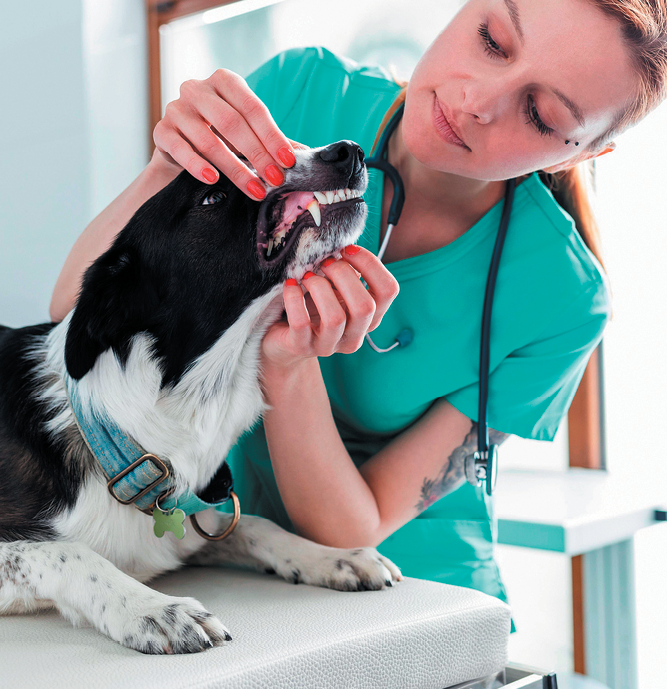Ironically, the most common disease to affect dogs is the one not necessarily covered by pet health insurance. We’re talking about dental disease. By the age of 3, four out of five dogs show at least some dental deterioration in the form of periodontal (gum) disease. If left untreated, it can lead to infections and, eventually, tooth loss. Fractured teeth comprise another common dental issue. But health insurance for dogs varies widely in terms of reimbursing for treatment, which for a procedure like multiple teeth extractions can easily cost thousands of dollars.
The long and the short of it: The need for dental care is most likely in your dog’s future, so it’s very important to compare dental benefits when deciding on a plan. The last thing you want is to have to defer treatment and perhaps leave your pet in serious pain, or perhaps vulnerable to worsening disease. When your dog is sick, the focus should be on the best treatment rather than on cost.
Consider that so many dental problems come as a surprise, and the need to plan for a rainy day becomes even more important. Let’s say your dog is undergoing a routine cleaning, and the veterinarian finds he has a tooth that requires extraction. It’s a common scenario that can easily turn a three-figure procedure into a four-figure one, really throwing off a budget if the right health insurance isn’t in place.
Dental accidents versus dental illness
Some plans may cover accidents such as a fractured tooth but not the cost of treating an illness like periodontal disease. How far the coverage stretches will vary, too. There may be a limit to how much a policy covers for dealing with an accident, and an annual limit for dental illnesses or routine care.
You also have to read the fine print. Something like periodontal disease may only be covered if your dog has had a cleaning under anesthesia during the previous 12 months. That is, an insurance company may not cover dental illness if you let routine care go by the wayside and then your dog develops a serious problem.
There may be exclusions for certain treatments, as well. These could include root canals or implants — expensive procedures that will save a tooth rather than simply having it extracted. (A single root canal can be in the $5,000 range.)
But tooth extractions may not be covered, either, and a single one might cost in the neighborhood of $1,000. In a number of cases a dog will need several teeth extracted at once.
Check, too, for breed restrictions. Small dogs are at high risk for dental problems. One study that looked at more than 3 million dental records found that dogs weighing less than 14.3 pounds were up to five times more likely to be diagnosed with periodontal disease than dogs weighing more than 55 pounds. In fact, while the American Animal Hospital Association recommends that large dogs go for annual cleanings starting at age 2, it says small dogs should go for their first yearly cleaning at age 1. If left untreated, harmful bacteria that are part and parcel of periodontal disease can make their way into a dog’s bloodstream.
Some health insurance plans offer a wellness rider for periodic cleanings. It will make the plan cost more, but you’ll want to weigh that against the fact that annual dental cleaning under anesthesia sometimes runs to at least $1,000.
Help for making heads or tails of the choices
You don’t have to pore over myriad pet health insurance policies on your own. The American Animal Hospital Association has partnered with an online pet insurance marketplace called Pawlicy, which is a Preferred Business Provider. You can use Pawlicy Advisor to see — all in one place — pet insurance quotes from top providers, custom comparison charts, and rankings based on breed-specific health risks and lifetime pricing. Check out pawlicy.com or call (866) 729-5429.
Veterinary dentist Bonnie Shope, VMD, and a member of our editorial board, encourages people to purchase health insurance before their dog’s mouth is ever examined. Once a condition is diagnosed, it becomes a preexisting condition and may not be covered.





